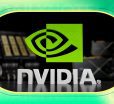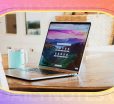Most people prefer to take in information visibly. For proof of this, consider the popularity of infographics. You can even find infographics parsing out information on infographics. All businesses should be using visual aids for better communication.
This means taking advantage of templates to streamline processes, using calendars to organize teams, developing a strong brand identity, and simply getting information across more clearly. If you’re not fully embracing visuals, there are many reasons you may want to start.
Appeal to the Visual Learner

Research indicates that up to 65 percent of people are visual learners. If you don’t use visuals internally and externally, you may not be communicating effectively with most people. This includes employees and team members as well as existing and potential clients.
Visual learners see information spatially. They get more out of graphics and charts than a written paragraph with the same information. They prefer meetings with a whiteboard to a 20-page document. They respond better to visual memos than lengthy emails.
This idea applies to both team members and customers or your target external audience. An infographic for your social media post reaches more people than a multi-paragraph description. Even people who are not primarily visual learners often digest more information from visuals than from written materials.
Automate Processes with Templates
Business processes are complicated, which means there is room for error. The more you can automate these processes, the more efficient and mistake-free they become. Visual aids can be an important part of doing this.
A template is an excellent example of using visuals to automate. You can use templates for project checklists, email or memo formats, task management, and marketing. Figure out where you have the most complexity in your business, and create templates to simplify it.
To create uniformity that streamlines processes, rely on templates. For instance, a marketing plan template gives team members a guideline to follow. It ensures that everyone is on the same page and presents information in the same way.
Create Specific Calendars

A calendar is a visual aid people and businesses have been using for many years, long before the digital age. Now, they are easier than ever to customize and use. As a visual, a calendar shows people where they need to be on certain days, when tasks are due, and when to send out information or post content.
Take your calendar creation beyond the typical use, which is for scheduling meetings. The right tech platform makes it easy to customize calendars to departments, teams, and even individuals. For instance, your design team would benefit from a design process calendar that provides a visual of each step and each person’s responsibilities along the way.
A social media calendar ensures content gets posted in a timely fashion and that it is current and relevant. A marketing calendar helps you roll out new products, plans, and events. Keep everyone on track and on task with layered and visual calendars.
Develop Brand Identity
A visual approach is an absolute must for brand identity. No one will recognize your brand from a paragraph of content. They see the visuals that you come to associate with your business and its philosophy.
This also applies internally. When developing your brand, use visuals along with descriptive words to flesh it out: mood boards, photographs, logos, videos, color, and even fonts. Visuals describe your business esthetic, tone, and style far better than any words. Images and visuals target emotions rather than intellect, which is what you want for strong brand identification and recognition.
Make Information Digestible

Perhaps most importantly, your business needs to use visuals to convey information. Infographics are a great example of visualizing complex information, statistics, and data. The visual aspect of these graphics makes complicated and detailed information much more digestible for any audience.
Especially in the modern age of the internet and social media, people tend to give up on wordy information and long blocks of text. You can keep people more engaged and ensure they receive your message with a visual, specifically an infographic. Use more visuals than text in social media, marketing, and even in internal communications when appropriate.
Keep it Simple, Keep it Visual
Ultimately, visuals simplify communication. All businesses must communicate with team members and with clients, and a wider audience. You have a message to send, and you don’t want it ignored. Rely on more visuals for clearer, simpler communication, greater engagement, and streamlined efficient processes.
Read Also:




























